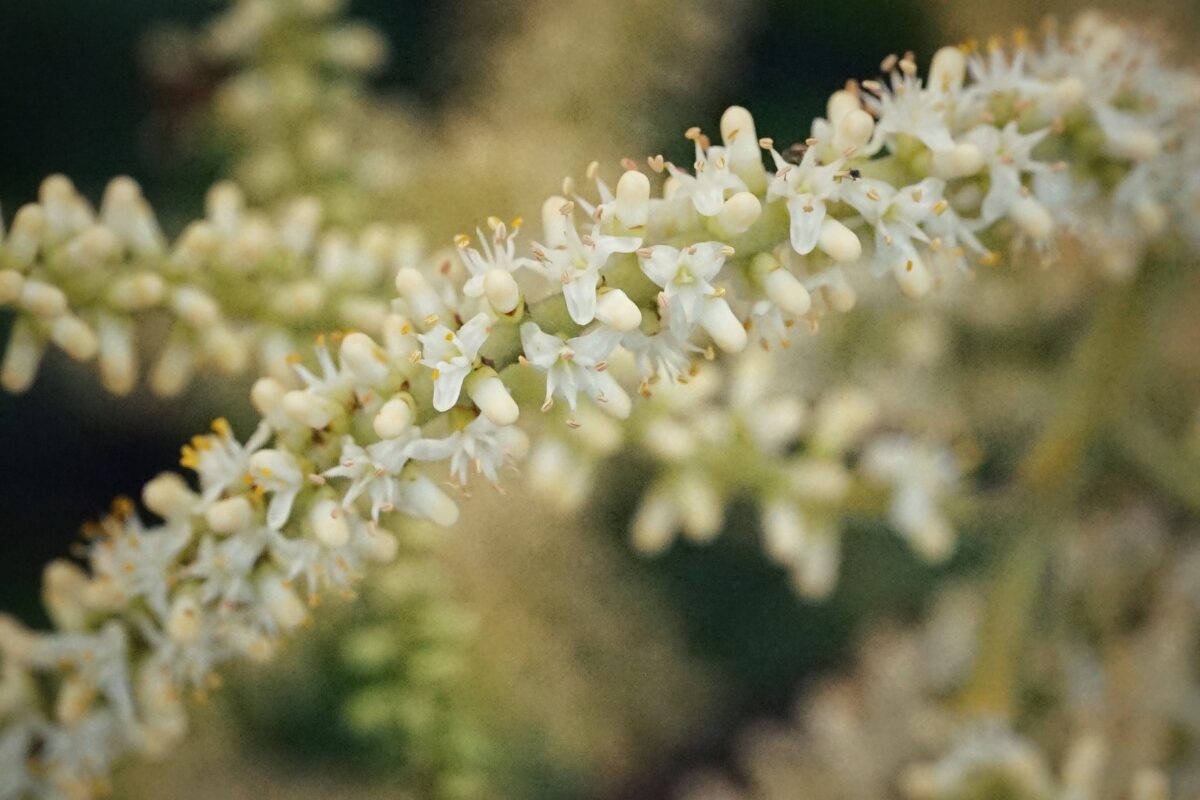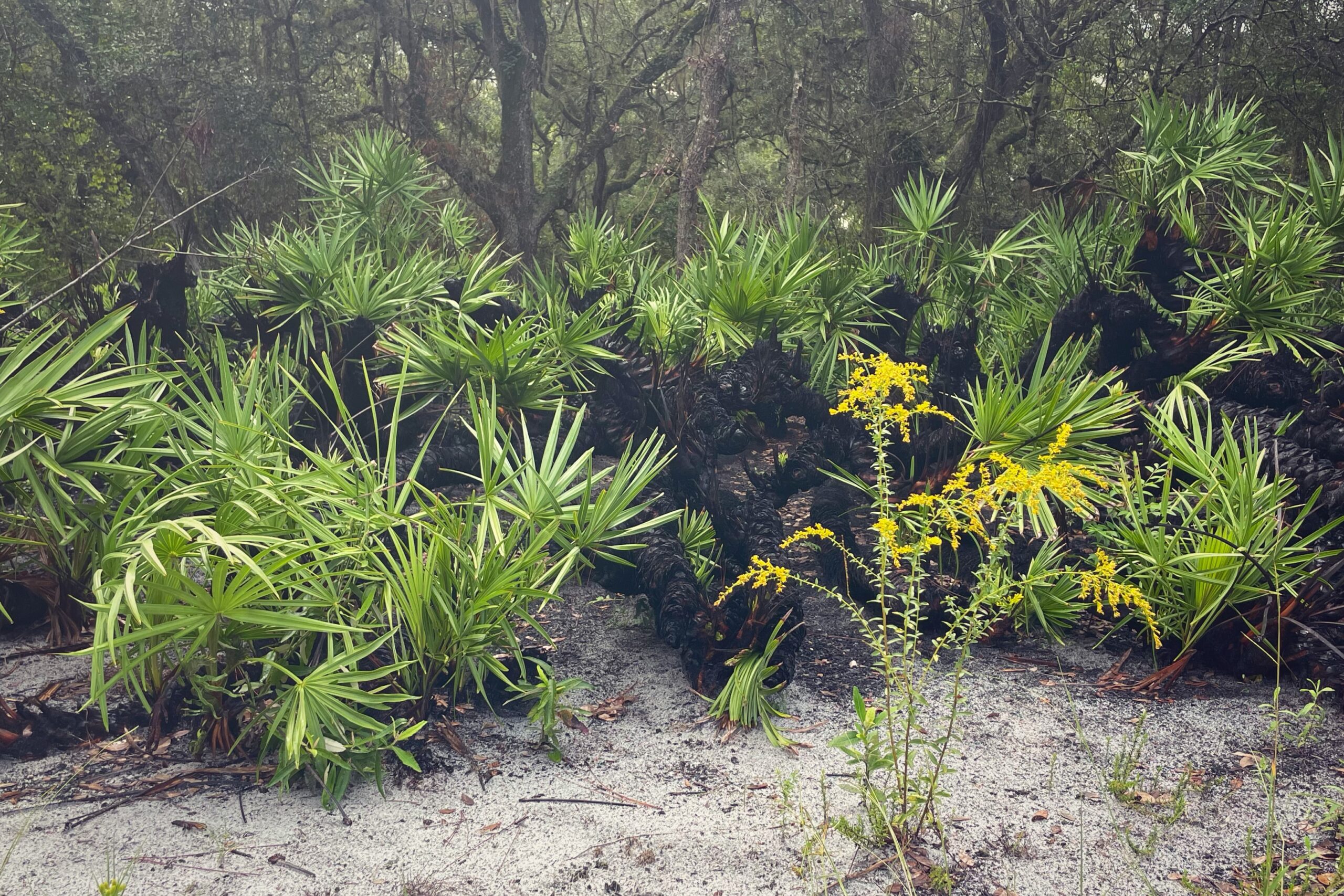Saw palmetto
Pictured above: Saw palmetto (Serenoa repens) by Emily Bell. Click on terms for botanical definitions. View post as a PDF.
Saw palmetto is an evergreen shrub found in scrub, pinelands, coastal hammocks, and dunes in all of Florida but mainland Monroe County. Dr. Mark Deyrup of Archbold Biological Station calls it the “most amazing plant in Florida.” He has counted 311 species that use Saw palmetto, while many other species have documented interlocking relationships with the plant. It is extremely valuable to hundreds of species of birds, mammals and other wildlife and insects as a source of food and cover. Its flowers are a major source of nectar for honeybees. Its berries are a staple for the Florida black bear. They also are edible to humans.
Flowers are tiny (less than ¼ inch in diameter), creamy white, and born in long, dense panicles. They have a subtle but sweet fragrance. Leaves are fanlike and deeply divided, with 20± leaflets and a thick petiole that is armed with tiny but sharp teeth (hence the common name). Trunks may be upright but are generally prostrate or underground. Bark is fibrous. Fruits are oblong orangish-yellow drupes that turn black when ripe. A silver form of Saw palmetto is found frequently near Florida’s east coast. Its leaves have a waxy coating that gives them a silver hue.

The genus name Serenoa pays homage to American botanist Sereno Watson (1826–1892). The species epithet repens is Latin for “creeping” and refers to the low, creeping habit of the trunk.
Family: Arecaceae (palm family)
Native range: Throughout Florida, except mainland Monroe County
To see where natural populations of Saw palmetto have been vouchered, visit florida.plantatlas.usf.edu.
Hardiness: Zone 8A–11A
Lifespan: Perennial
Soil: Dry to moist sandy, loamy, or calcareous soils
Exposure: Full sun to partial shade
Growth habit: 3–6’+ tall and as wide
Propagation: Seed, rhizome fragments
Garden tips: Saw palmetto is a slow-growing and long-lived plant. It works well as a specimen or accent shrub, or can be grouped to form a low buffer, particularly in areas where foot traffic is not desired. It is highly tolerant of drought and moderately so of salt winds.
Saw palmettos are available from nurseries that specialize in Florida native plants. Visit www.PlantReaFlorida.org to find a nursery in your area.

